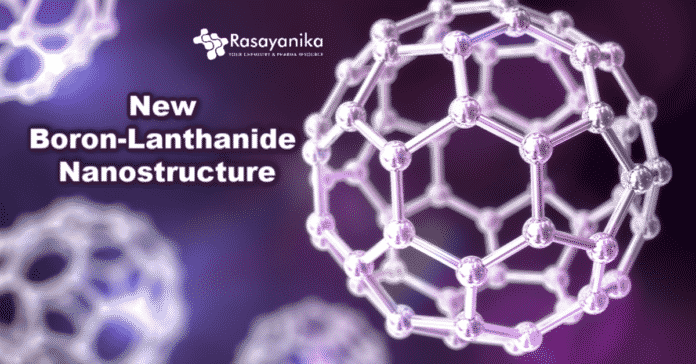New boron-lanthanide nanostructure
The launch of the nanotechnology revolution was aided by the discovery of carbon nanostructures like 2D graphene and football ball-shaped buckyballs. Recently, researchers from Brown University have revealed that boron can also make interesting nanostructures, consisting of 2D borophene and borospherene – a buckyball like hollow cage framework.
Currently, another boron nanostructure has been added to the list by the researchers from Brown University and Tsinghua University. The research paper is published in the journal Nature Communications, they show that clusters of 18 boron atoms and 3 atoms of lanthanide elements form a strange cage-like framework, something which they have never ever seen before.
Lai-Sheng Wang, a professor of chemistry, Brown University, and senior author of the study said, this is simply not a type of structure you expect to see in chemistry. We really had a hard time to define it when we wrote the paper. The structure of the newly discovered boron-lanthanide nanostructure is a spherical trihedron. Generally, you can not have a closed 3D framework with only 3 sides, however, it works, given that it’s spherical.
The team of researchers are hopeful that the nanostructure might shed light on an important class of materials
extensively utilized in electronic devices and also other applications – the bulk framework and chemical bonding behavior of boron lanthanides. The researchers claim that the nanostructure may have interesting properties on its own.Wang said lanthanide elements are essential magnetic materials, each with very various magnetic moments. He added that they believe any of the lanthanides will certainly make this structure, so they could have magnetic properties that are extremely interesting.
The lanthanide-boron clusters were made by focusing a powerful laser onto a mixture of lanthanide and boron made into a solid target. The lanthanide-boron clusters are developed by the cooling of the vaporized atoms. After that, they study the electronic properties of the lanthanide-boron clusters using a method called photoelectron spectroscopy. The method comprises of zapping atom clusters with another laser of high-power. An electron is knocked out of the cluster by each zap. Researchers can produce a range of binding energies for the electrons that bond the clusters with each other by measuring the kinetic energies of those freed electrons.
Wang claimed, we know there’s a beautiful structure behind it when we see a wonderful and simple spectrum.
The theoretical calculations done by Professor Jun Li and his students from Tsinghua were compared with the photoelectron spectra to figure out what that structure resembles. They come to know that they have actually found the right structure, once they discover a theoretical structure having a binding spectrum that matches the study.
Wang said the structure of the new boron-lanthanide nanostructure was something we never ever would have anticipated to see. That’s the value of incorporating experimental information with the theoretical calculation.
The researchers have dubbed the new structures metallo-borospherenes, and also they’re hopeful that their properties could be revealed by further studies.
Author: Sruthi S

















































